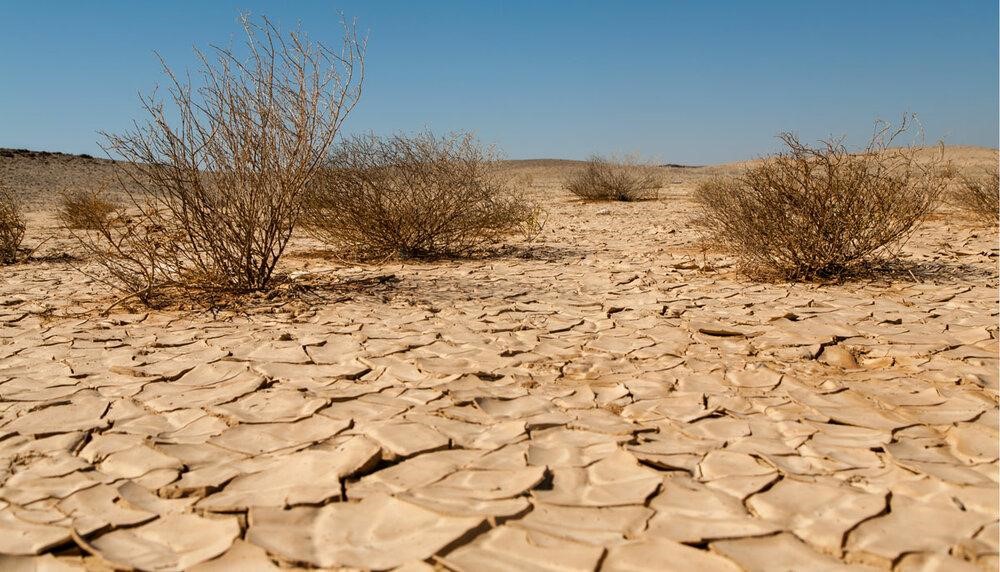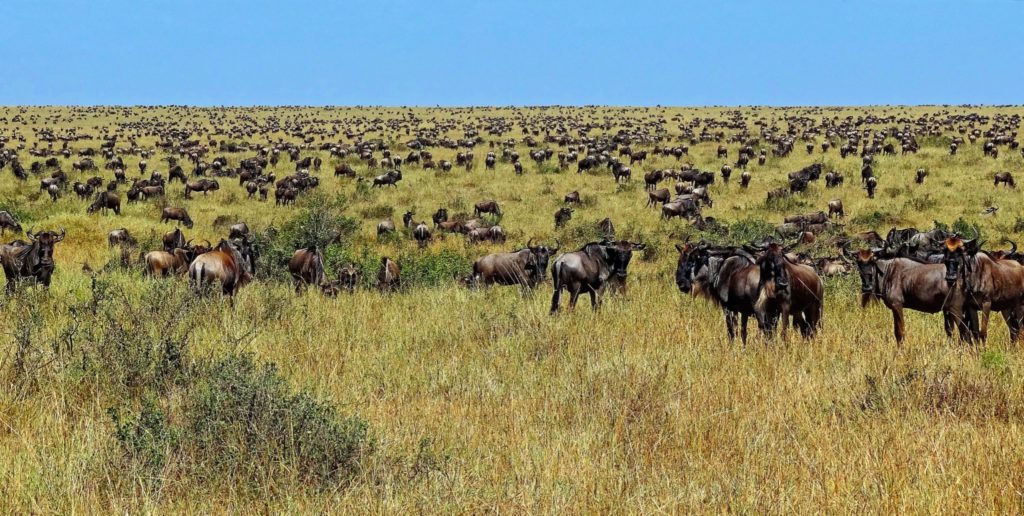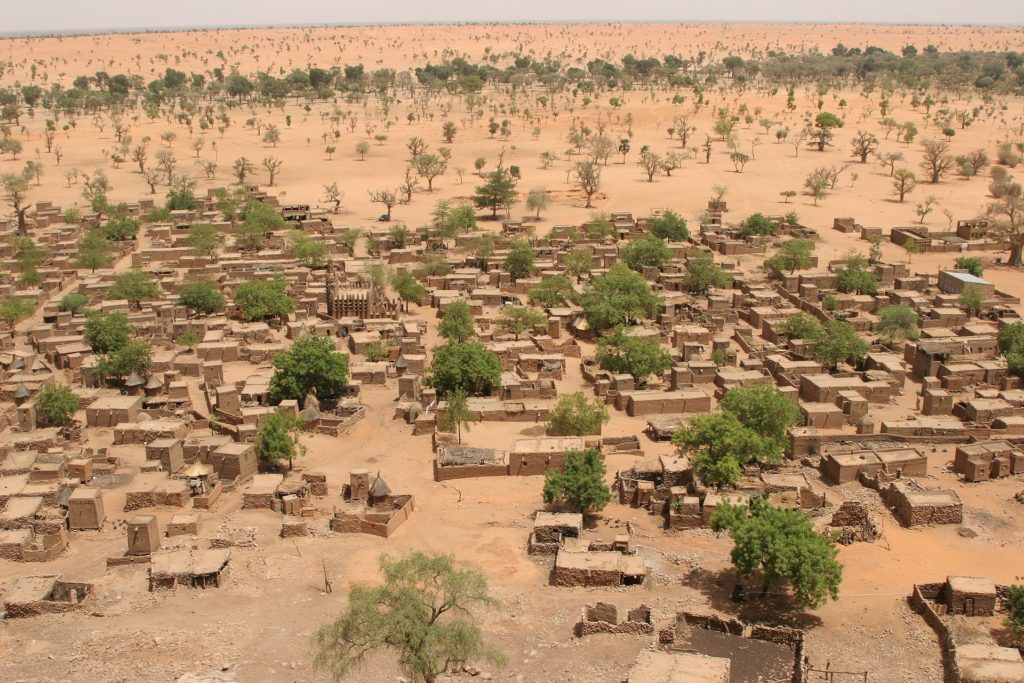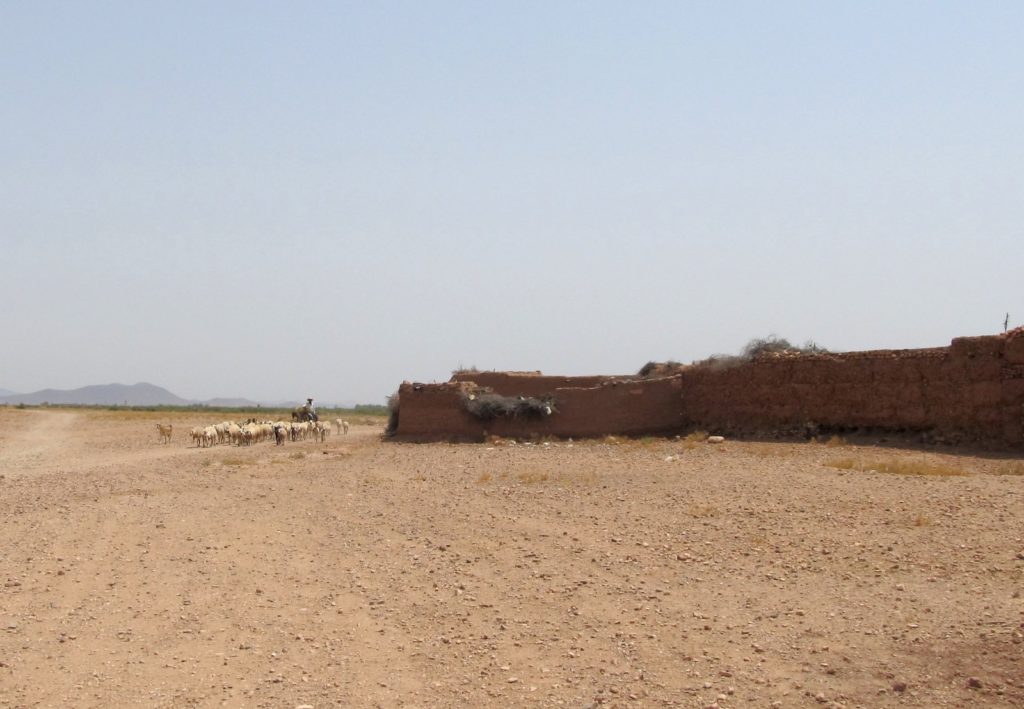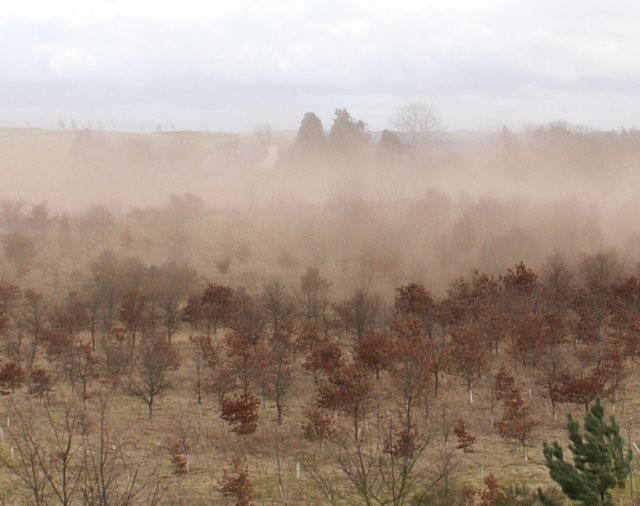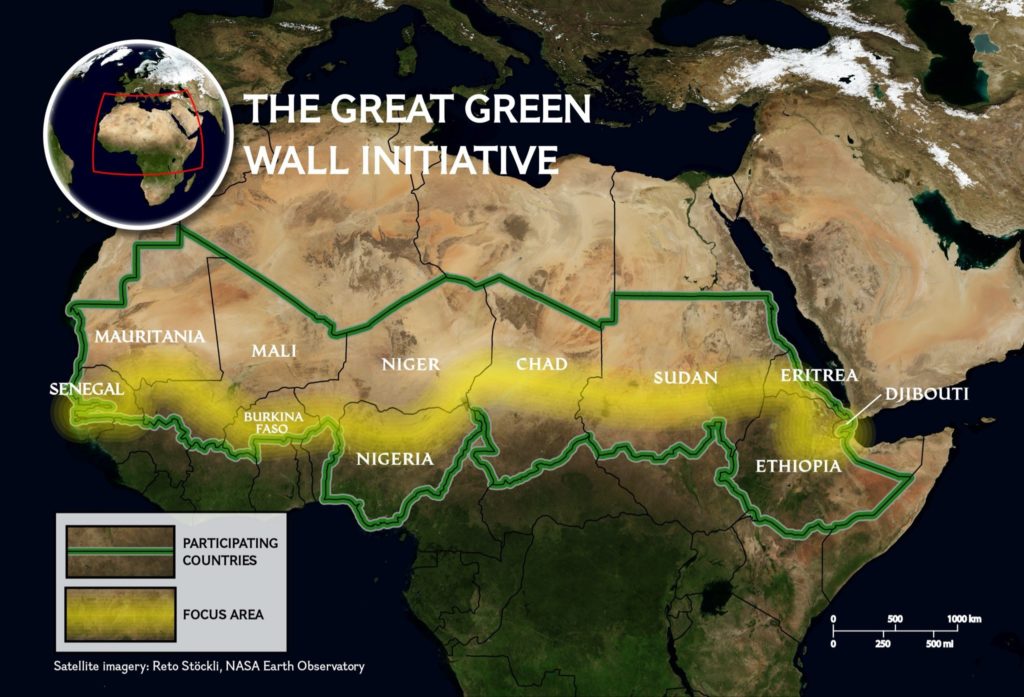What is Desertification?
Desertification, as defined by the United Nations Convention to Combat Desertification (UNCCD), is “land degradation in arid, semi-arid and dry sub-humid areas resulting from various factors, including climatic variations and human activities.” It refers to different processes that endanger all dryland ecosystems, such as grasslands, scrublands, and deserts. However, desertification does not mean the expansion of deserts; it is an overarching term for land degradation in parts of the world where water is scarce. This degradation includes the temporary or permanent deterioration of many natural elements such as soil quality, water resources, vegetation, and wildlife. Simply put, desertification causes the land to no longer be able to support the same plant life as it did before.
History is no stranger to land degradation; however, the world today faces degradation at a rate 30 to 35 times faster than historical records. This has caused great international concern as almost half of the Earth’s ice-free surface — around 52 million square kilometres — is composed of drylands. To this day, 36 million square kilometres of land have been affected by desertification.
What are the Reasons for Desertification?
Desertification stems from multiple compounding factors such as variations in climate and unsustainable human activity.
Climate Change:
Arid and semi-arid ecosystems experience very little or variable rainfall. Climate changes would then result in these areas experiencing extended periods of drought that drastically reduce the productivity in these environments. These changes may be temporary, only lasting a season, or they could carry on for several years or even decades.
Human-caused global warming is also a strong contributor to the problem. As the world’s temperature increases, plants can experience heat stress, and whole ecosystems are subject to extreme weather events. Drastic changes in climate and natural variability also affect rainfall patterns, which can also contribute to desertification. Too little rain can cause soil to dry out and be more susceptible to erosion, while too much can erode the soil and lead to subsidence and waterlogging.
Cultivating Practices:
Increasing demands for food can lead to the expansion of croplands into forests and grasslands. Farmers who do not know how to use the land effectively would employ intensive farming methods to maximise yields. Harmful chemicals found in fertilisers and pesticides may yield abundant produce for the short term but result in soil no longer being arable in the future. These processes strip the soil of its nutrients, rendering it especially susceptible to desertification.
Overgrazing:
Also related to food production, the raising of livestock in certain areas poses the additional risk of overgrazing. This is when livestock consumes the land’s available vegetation, and the topsoil becomes exposed to erosion. When the topsoil is gone, the soil has few remaining nutrients. Overgrazing makes it difficult for plants to grow back and return the environment into its formerly lush state.
Deforestation:
Removing trees from natural environments disturbs the balance of nutrients in the soil and takes away the roots that keep the ground together. A scarcity of trees present in an environment leaves the soil significantly at risk of erosion, leaving soil susceptible to being washed or blown away.
Urbanisation and different kinds of land advancement:
Urbanisation and advanced technology and development may at first seem very beneficial towards human populations. However, some practices allow people to utilise the land much quicker than it can replenish its resources. Urban development, the building of cities and settlements, also leaves little room for vegetation to grow and flourish.
What are the Impacts of Desertification?
Desertification is a problem many nations face today and is one of humanity’s greatest environmental challenges. The UNCCD reports that 250 million people are affected by this crisis. It is estimated that by 2045, 135 million people may be displaced by desertification.
The African continent faces severe threats from desertification. The countries situated on the border of the Sahara are among the poorest in the world and are seriously affected by droughts. A third of Africa’s drylands are uninhabitable deserts, while the remaining two-thirds struggle to support two-thirds of the continent’s population. Desertification in these regions continues to harm the lives of the people who inhabit them.
Difficulty in Agriculture and Cultivation:
Desertification leads to crop failures and minimal yields in rain-fed farmland. Once an area loses all its resources and changes from arable to arid, it is a near-impossible task to continue farming. Without anywhere to plant or raise livestock, it is very possible for farmers to completely lose their livelihoods.
Hunger:
With the loss of productive farms, food shortages would be imminent. People and animals alike would face hunger as the land could no longer support their needs.
Loss of potable water and poor water quality:
Vegetation is essential for maintaining water quality and accessibility. The loss of plant life in the area would also lead to the loss of potable water stocks from groundwater flow and reductions in water stocks. Moreover, dust and sedimentation could cause a serious decline in water quality.
Flooding:
With no vegetation to manage and utilise water, degraded areas are prone to flooding. An increase in sedimentation in rivers and lakes can also strongly contribute to this problem.
Increase in sand and dust storms:
Also known as “yellow dust”, “sirocco”, “harmattan”, “white storms”, “haboob”, sandstorms and dust storms occur when strong winds pick up loose sand and dirt from arid soil. Although these are natural occurrences, many areas are experiencing an increase in the frequency of these events. Dust storms can also have a detrimental effect on human health, causing respiratory disorders, skin irritation, and cardiovascular issues. These may also damage equipment, such as solar panels and wind turbines and disrupt roadways, railways, and airports.
Loss in Biodiversity:
Significant losses in flora translate to fauna as well. Some wildlife species, large mammals especially, find it difficult to adapt to rapidly changing conditions. Desertification may also make an area vulnerable to invasive species that are more harmful than helpful to the existing environment. Against the changing climate and new competition, many animals experience a decrease in population and are threatened by endangerment or even extinction.
What are the Solutions for Desertification?
There is no cure-all solution for desertification and its devastating effects. However, this does not mean that it can’t be helped. In 1994, the United Nations Convention to Combat Desertification (UNCCD) was established in the hopes of fighting back against this global crisis. In this convention, 112 countries agreed to a set of Land Degradation Neutrality targets. Some examples of existing efforts include collaborating with farmers to protect arable land, rehabilitating degraded land, and more effectively managing water supplies.
In 2015, the UN General Assembly included Land Degradation Neutrality (LDN) as one of the Sustainable Development Goals. This goal aims to avoid land degradation, minimise it in already affected areas, and counteract and offset its effects by rehabilitating land in other regions.
Sustainable Land Management (SLM) has also been identified as critical to achieving the LDN goal. This centres on striking a balance between maximising land and resource potential and maintaining and improving its productivity and ecological condition. Sustainable Land Management calls for the utilisation of a variety of agricultural techniques beneficial for the health of the land. Crop rotation, rotational grazing of livestock, leaving remnants of crops after harvest, are some methods that protect and add to the soil’s nutrients.
The UNCCD has also endorsed the Great Green Wall Initiative, a project led by the African Union that aims to combat desertification. This initiative, encompassing 20 countries, intends to restore 100 million hectares of vegetation on the African continent. Similar efforts have also been conducted specifically in Northern China; the Chinese government is planting trees along the border of the Gobi Desert. The trees and other flora planted in both projects are expected to act as buffers against desertification, protecting farmlands, grazing areas, and the livelihoods of the people that live nearby.
However, 80% of farms worldwide are usually managed by individual families. This is especially observable in Asia and Africa. Not all “top-down” solutions have proven effective due to low community involvement. In response, researchers have determined that traditional knowledge can be an effective countermeasure against land degradation. Communities have successfully existed in harmony with the land for generations. These same communities might already possess the knowledge on how to best take care of their surrounding environment.
Frequently Asked Questions
What is desertification?
Desertification is the process of land degradation in arid, semi-arid, and dry sub-humid regions. It involves the loss of vegetation cover, soil fertility, and water resources, leading to the expansion of desert-like conditions.
What are the main causes of desertification?
The main causes of desertification include overgrazing, deforestation, improper agricultural practices, climate change, and drought. These factors contribute to soil erosion, reduced water availability, and degradation of land productivity.
What are the impacts of desertification?
Desertification has several negative impacts, such as decreased agricultural productivity, loss of biodiversity, increased soil erosion, water scarcity, displacement of populations, and social and economic instability in affected regions.
How can desertification be prevented or reversed?
Desertification can be prevented or reversed through sustainable land management practices, including reforestation, erosion control measures, water conservation, agroforestry, and the promotion of sustainable agricultural practices.
What are some successful examples of combating desertification?
Successful examples of combating desertification include the Great Green Wall initiative in Africa, which aims to create a large-scale mosaic of green landscapes across the Sahel region, and the restoration projects implemented in the Loess Plateau in China.
References
- Arcology. (n.d.). Retrieved from Pinterest: https://www.pinterest.com/pin/55028426679963332/
- Desertification. (n.d.). Retrieved from NASA.gov: https://earthobservatory.nasa.gov/features/Desertification/desertification2.php
- Desertification. (n.d.). Retrieved from Britannica: https://www.britannica.com/science/desertification/Rain-fed-croplands
- Desertification, explained. (n.d.). Retrieved from National Geographic: https://www.nationalgeographic.com/environment/habitats/desertification/
- Explainer: ‘Desertification’ and the role of climate change. (n.d.). Retrieved from CarbonBrief: https://www.carbonbrief.org/explainer-desertification-and-the-role-of-climate-change
- Sad but true! Facts and figures on desertification. (n.d.). Retrieved from UNDP: https://www.undp.org/content/dam/turkey/docs/news-from-new-horizons/issue-7/UNDP-TR-desertification.pdf
- What is Desertification? (n.d.). Retrieved from Conserve Energy Future: https://www.conserve-energy-future.com/causes-effects-solutions-of-desertification.php

